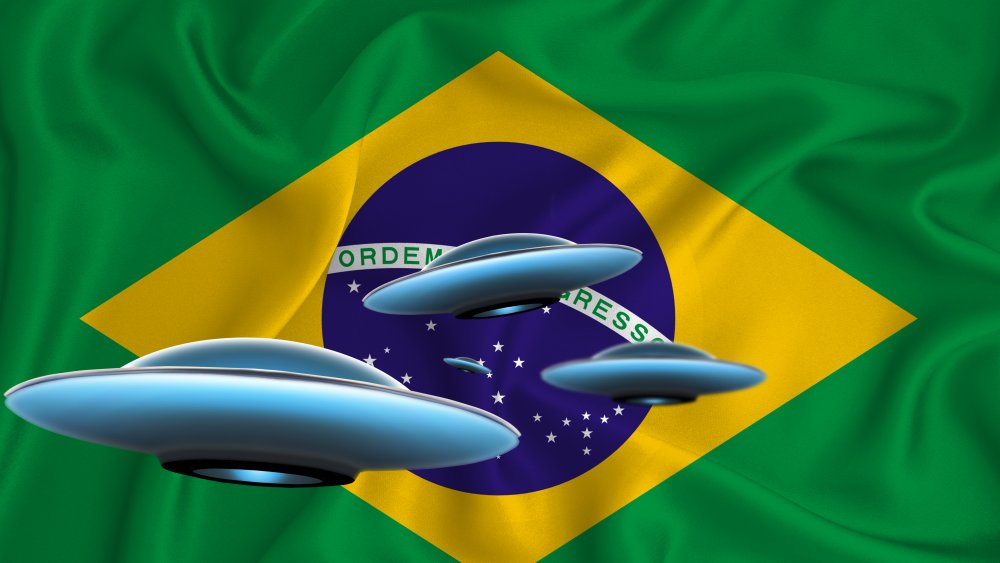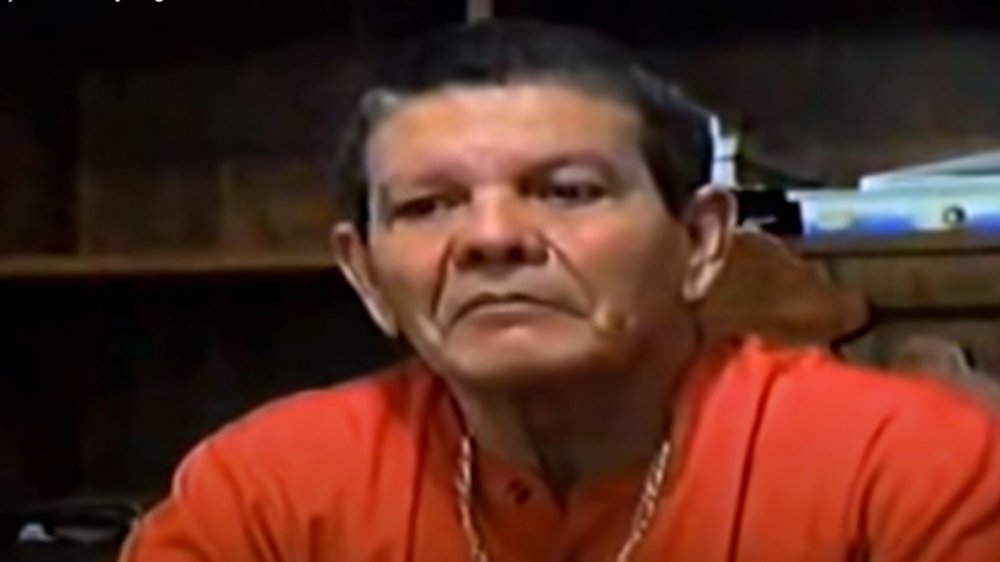What Really Happened When UFOs Attacked A City In Brazil
Newsflash: UFOs swarm the Brazilian island of Colares! Big, small, saucer-shaped, cigar-shaped, barrel-shaped, flickering, flashing, striking residents with beams of light that steal their blood and leave puckered wounds and holes in the skin. Citizens from all walks of life retaliate: priests, carpenters, farmers, fishermen, taking aim with rifles. Some are left paralyzed, and most are struck with physical weakness, shakiness, and a strange giddiness. Exposure to Intense radiation has claimed the lives of two.
No, this isn't a War of the World-type of radio script read by Orson Wells, nor is it the plot to a shticky, alien-invasion B-movie full of special effects of questionable quality. This actually happened, in 1977, from October to December, as cited by numerous sources, including SyFy Wire. In fact, it triggered a massive military investigation called Operação Prato (Operation Plate) that produced over 1,000 pages of documents, including hundreds of photos, diagrams, maps, and five hours of raw footage, per Ufologie. At present, 200 of these pages have been scanned, put online, and translated into English.
Brazil, in fact, as been a hot spot for UFO activity for decades. The Brazilian Air Force unsuccessfully tried to converge on 21 UFOs in 1986, as documented by the Brazilian Ufological Research Center. In 2010, the Brazilian military decided to document all future incidents of UFO sightings, per the BBC. As recently as May 2020, there was a UFO scare in Magé, north of Rio de Janeiro, as reported by Vice.
Real-life blood-sucking alien space lasers
Many of the details of the incident at Colares comes from Captain Uyrangê Hollanda, of the Air Force, who took part in Operation Plate and shared his story with MUFON (the Mutual UFO-Network) in 1997. An extended interview with him can be found in Brazilian Portuguese on YouTube, and a briefer version can be found translated into translated into English, but in short, Captain Uyrangê spent a period of four months advising and interacting with locals, in regard to the incident. He made observations, and headed up the report. In total, the investigation yielded documentation of nine types of craft, including photos and sketches. Various international researches, including venture capitalist and ufologist Jacques Vallee, took part in the investigation. Eventually, investigators could predict the movements of the UFOs because they traced along geographic regions as if conducting a survey. Some of them were completely silent, while others made a buzzing sound, or a hum similar to an air conditioner.
Most disturbing of all is the theft of blood and the wounds left on victims. The wounds were dubbed chupa chupa (chupa in this context meaning "suck"), commonly found on arms or chests. The UFOs tended to assault those who first targeted them with aggressive actions, which led Captain Uyrangê to advise against violent posturing when confronted with a UFO.
Three months later, according to Yahoo News, the captain was found dead in his house, in what was ruled suicide.

